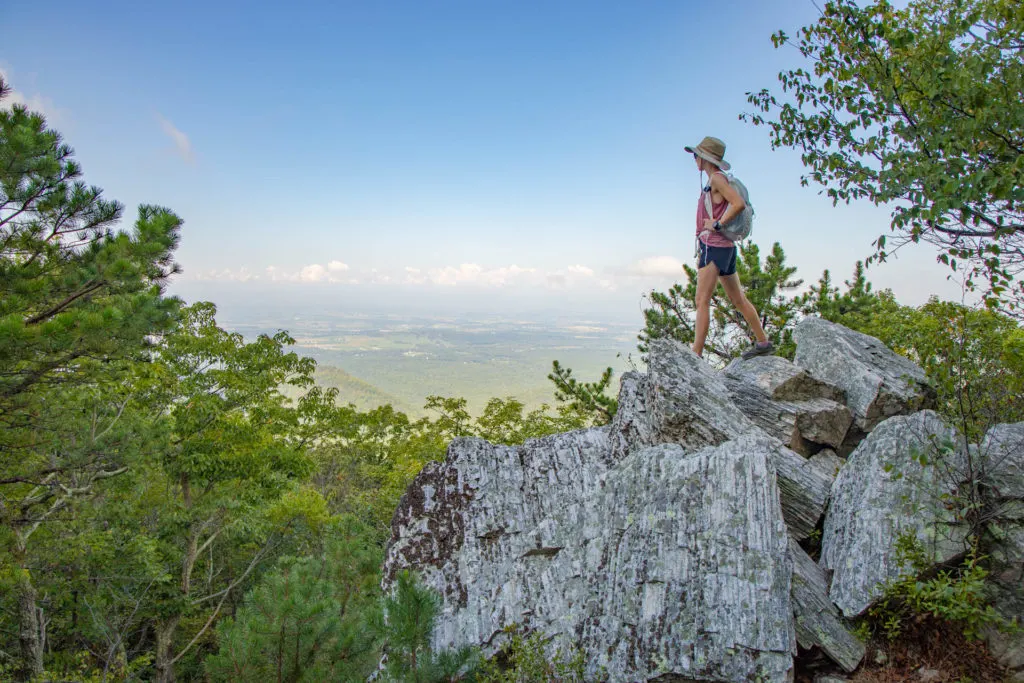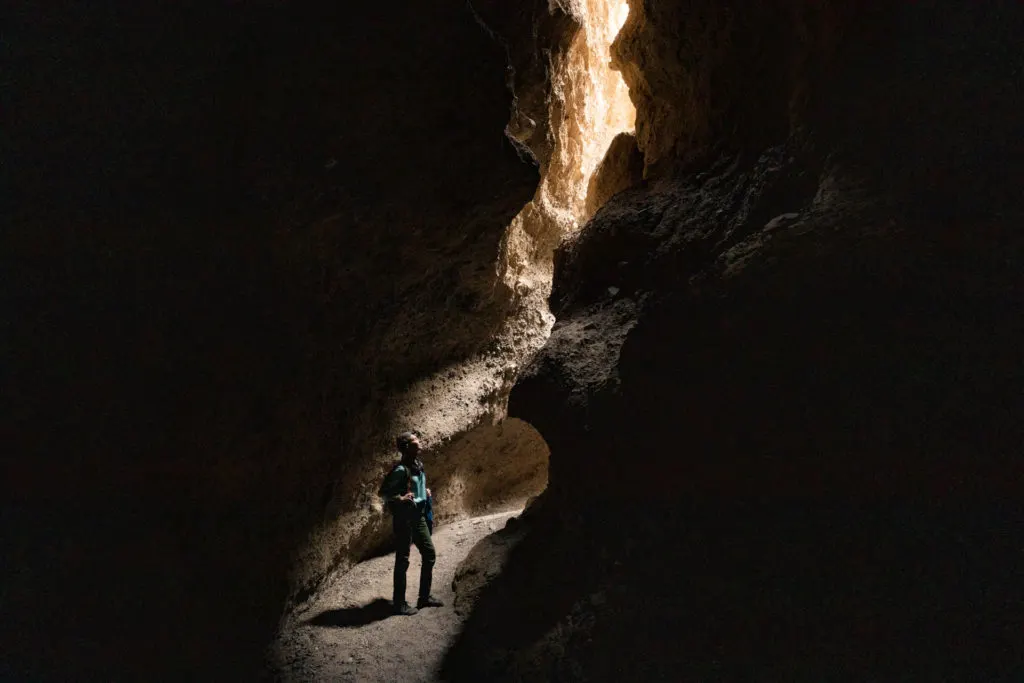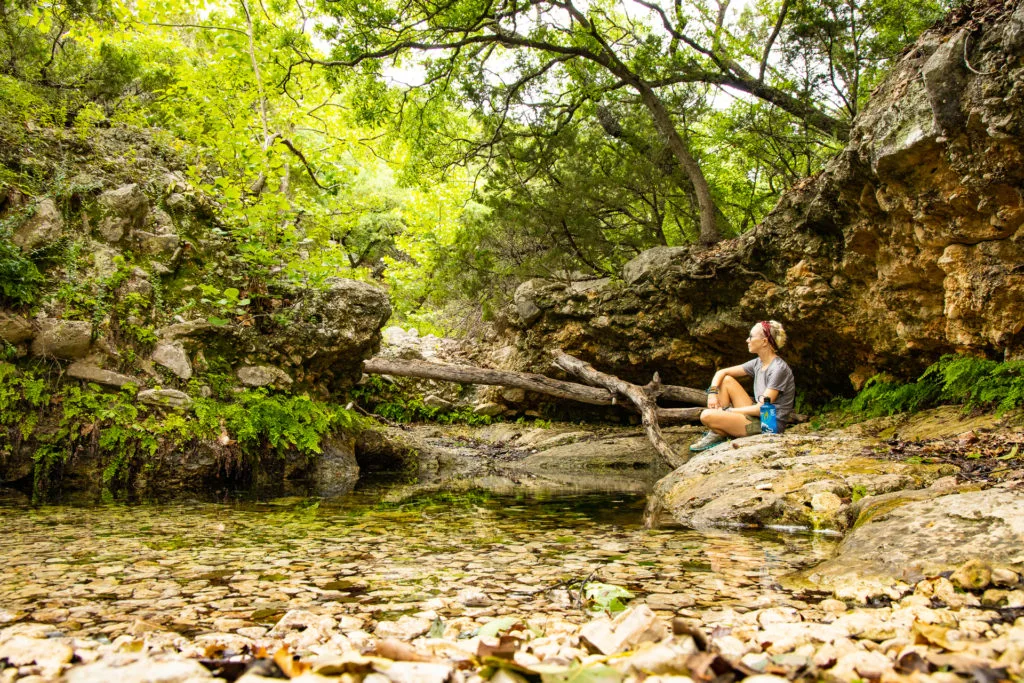Up to 50% Clearance Clothing & Footwear + Extra 25% Off REI Outlet.
Think you might want to go on a solo backpacking trip? We highly recommend it! It offers a fantastic opportunity to explore the outdoors at your own pace, listen to the sounds of nature, make new trail friends, and enjoy some quiet time with just you and your thoughts. I’m a big fan. But not everyone feels comfortable hiking or backpacking alone, especially women.
But it’s not just women who are often afraid to embark upon a solo hiking adventure: people of color and LGBTQIA+ folks, even men from time to time, often feel uneasy on their own in the outdoors, too. Fortunately, there are ways to assuage that fear and go boldly into the backcountry with no company but your own. Here are a few tips on how to safely hike alone.

First, the Facts
Right off the bat, let’s get something straight: the outdoors is not an unsafe place to be as long as you know what you’re doing and use common sense. In fact, going hiking or backpacking is safer than hopping in the car and running errands around town. Take deaths recorded in National parks, for example: there were less than 8 deaths per 10 million visitors between 2007-2018 and most of those were natural causes like heart attacks, falls, and drowning. Car accidents, on the other hand? In just one year (2020), there were 11.7 deaths per just 100,000 people!
So no, backpacking alone is hardly the risky endeavor many people make it out to be. So let statistics bring you calm and clarity and leave no room for excuses!

Tell Someone Where You’re Going
The first rule of any hiking or backpacking trip, especially if you’re hiking alone as a woman (or anyone, for that matter), is to tell someone like a friend or family member where you’ll be going, your planned itinerary, and when you plan to be back. That way, if you don’t check in within a few hours or a day of when you’re scheduled to return, they can check in on you or call Search and Rescue and tell them where you were meant to be. That can shave days or hours off of search efforts, potentially saving your life in an emergency.
Shrug off the Haters
Anyone hiking alone as a woman has gotten the same concerned looks and shocked questions: Are you hiking alone? Are you all by yourself out here? Your boyfriend or husband isn’t with you? Then there are comments geared toward POC or other “unlikely” hikers: Good for you for being out here. Are you going to be OK on your own? But these questions and insinuations that imply you can’t possibly take care of yourself out here get old fast.
But unless someone is threatening violence, using hate speech, or really making your alarm bells sound (if they are, get the heck out of there or find some fellow hikers to confide in and stick close to), don’t let it ruin your trip. Shrug it off, try to assume the best of people (they probably mean well or are genuinely curious as they would never in a million years think to explore the backcountry on their own), and move on, confident and proud that, yeah, you are out here on your own. Because you’re 100% capable of taking care of yourself out here. That said…

Don’t Answer all the Questions
You don’t have to answer questions from other hikers truthfully if you don’t feel comfortable. If you’re on a busy stretch of trail and are spending the night at a campsite likely to be populated with at least a handful of tents, then do what feels right to you. But if trails and campgrounds are empty or you feel unsure of the inquirer’s intentions, feel free to fudge the truth a bit.
Tell them a friend is joining you at camp or a spouse is waiting at the trailhead. Say you’re hiking out today, even if you aren’t, and don’t tell strangers on the trail where you’re camping. You response and its percentage of truthfulness will likely change from asker to asker (I’m more likely to be honest with other female hikers and backpackers than with groups of men, for example), but trust your gut and err on the side of caution.
Carry a Weapon
A weapon can be anything you feel comfortable with and is permitted where you’re hiking, but we recommend mace or a knife over firearms for plenty of reasons (including that they aren’t effective against bears). I opt for a serious folding pocket knife, personally (one of these will do nicely), as I feel safer with it in my pocket than pepper spray (plus, it’s a multi-tasker). Just keep it where it’s easily accessible in an emergency, including nearby while you’re sleeping.
Carry a Cell Phone or Emergency Communication Device
But don’t just carry it, use it. If you have service from time to time along the trail, update your emergency contact on your current location and progress if it makes you feel more comfortable. You can also share your location via online maps if you like.
Spotty service? Keep an eye on your phone, occasionally checking to see if you have bars, which will often be at high points or vistas. Even if you aren’t messaging anyone, it can be helpful to be aware of where it was that you last had cell service in case you do need to ask for help.

Be Familiar with Surrounding Trails
Wherever you’re hiking, study maps before you head out and carry a physical copy with you when you go. It can be immensely helpful, but also offer peace of mind, if you know where side trails and trailheads other than the ones you’re planning to use are located in case you need to make an exit. Whether you’ve twisted your ankle, are running low on food, are getting creepy vibes from another hiker, or just aren’t enjoying your hike, it can be helpful to know the fastest route back to civilization.
I also like to use digital maps like AllTrails or Gaia so I can track my progress as I go; pro accounts let you download maps for offline use.
Hike with a Dog
If you’re still wary of hiking or backpacking solo, don’t; bring your dog with you. Don’t have a dog? Borrow one. That’s what Emily Ford did when she thru-hiked Wisconsin’s Ice Age Trail solo in winter as a black woman. A big dog can offer peace-of mind, comfort and companionship (and often even protection) whether or not you find yourself in a bind.
Know Your Stuff
And maybe most importantly, be prepared and know your stuff. If you’re going to head out on a multi-day solo backpacking trip, make sure you’ve done your research, double-check that you have everything you need, and are prepared for every eventuality. After all, if you’re hiking with others, you’ll have someone else to bounce ideas off of, ask for advice, and assist with pitching a tent or getting help in an emergency. If it’s just you, you need to know how to treat a twisted ankle, find your way if you get turned around, pitch your tent, and make it back to the trailhead in one piece. So do your research and be prepared before you head out on your own.
You should also be wary of the top three causes of death in the outdoors–heart disease, drowning, and falls–and be extra cautious around water and cliffs when you’re solo backpacking or hiking (not much you can do about heart disease, unfortunately).

Bottom Line
Don’t let fear keep you from solo backpacking or hiking. Being alone in nature is a balm to the soul not only is there no reason to be fearful, but don’t let people convince you it’s riskier than it is. Just know how to protect yourself, get out there and wander on–solo.
Alisha is a freelance outdoor journalist and photographer based in Ogden, UT. She loves backpacking, hiking, mountain biking, kayaking and snowboarding (even though she’s terrible at it). She’s also pretty sure she’s addicted to coffee. alishamcdarris.com
